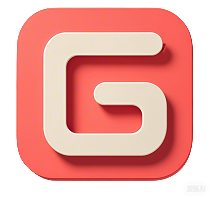Introduction
DTF (Direct-to-Film) printing is revolutionizing the way small businesses produce high-quality, durable prints on various materials. With its flexibility and cost-effectiveness, it’s becoming a top choice for startups and small businesses aiming to scale their operations in 2025.
In this guide, we’ll provide a comprehensive roadmap for selecting the right DTF printer, analyze key decision factors, and offer actionable insights to ensure your investment yields maximum returns.
Why DTF Printing Is Essential for Small Businesses
Cost-Effectiveness
DTF printing eliminates the need for expensive pre-treatment or specialized materials, making it an affordable option for businesses working with tight budgets.
Versatility
In contrast to conventional printing techniques, DTF can be used on a variety of materials, such as cotton, polyester, blends, and even leather, which allows for a wider range of product offerings, including personalized clothing, tote bags, and promotional items.
Market Trends in 2025
- Sustainable Solutions: Biodegradable films and eco-friendly inks are gaining traction as consumers and regulations demand greener practices.
- Automation: Features like automatic powder application and self-cleaning mechanisms are becoming standard, reducing manual labor.
- Modular Upgrades: Businesses can scale operations without replacing entire systems by upgrading specific modules in their printers.
Key Factors to Consider When Choosing a DTF Printer
1. Print Resolution and Quality
Higher DPI (dots per inch) ensures crisp, vibrant prints. For small businesses, 1440 DPI or higher is ideal for achieving professional-grade results.
2. Printing Speed and Efficiency
- Low-Volume Orders: Opt for moderate-speed printers to balance cost and output.
- High-Volume Production: Invest in faster models to meet growing demand without delays.
3. Total Cost of Ownership (TCO)
Consider not just the upfront price but ongoing expenses:
- Consumables: Ensure compatibility with economical PET films and inks.
- Maintenance Costs: Choose models with easily replaceable parts.
4. User-Friendly Features
- Intuitive controls and touchscreen interfaces simplify operations for teams with minimal technical expertise.
- Integrated RIP (Raster Image Processor) software allows seamless file preparation.
5. Support and Training
Comprehensive warranties, accessible customer support, and training programs are critical for minimizing downtime and learning curves.
6. Scalability
Opt for printers that allow modular upgrades to expand capacity as your business grows.
Case Studies: Real-Life Applications
Case 1: Startup Success with Cost-Effective DTF Printing
Scenario: A small T-shirt customization business wanted to minimize upfront investment while maintaining quality.
Solution: They selected an entry-level printer with moderate speed and low-cost consumables.
Result: Within six months, the business broke even, completing over 500 orders and gaining a loyal customer base due to consistent print quality.
Case 2: Scaling Operations with High-Performance Printing
Scenario: A mid-sized promotional products company needed to handle bulk orders for corporate clients.
Solution: They chose a high-speed DTF printer with advanced automation for powder application and color calibration.
Result: Production efficiency increased by 60%, and they expanded their offerings to include large-format prints for events.
Practical Tips for Choosing the Best DTF Printer
1. Assess Your Business Needs
Identify the average order size, material types, and print complexity to determine the specifications you need.
2. Factor in Consumable Costs
Select printers compatible with third-party consumables to reduce ongoing expenses without compromising quality.
3. Test Before You Buy
Request sample prints from manufacturers or distributors to evaluate performance, color vibrancy, and durability.
4. Prioritize Training and Support
Choose brands offering robust customer support, including maintenance guides, video tutorials, and live training.
5. Plan for Future Growth
Select a printer that can adapt to your business’s evolving needs, such as modular upgrades or compatibility with advanced software.
Common Challenges and Solutions in DTF Printing
1. Ink Clogging
Solution: Regularly clean the printhead and maintain consistent printer usage to prevent dried ink buildup.
2. Adhesion Issues
Solution: Ensure even powder application and verify that heat press settings match fabric requirements.
3. Print Banding
Solution: Calibrate the printer regularly and adjust resolution settings to eliminate streaks.
4. Limited Scalability
Solution: Invest in modular printers that allow upgrades to handle larger workloads as your business grows.
Future Trends Impacting Small Businesses
1. Eco-Friendly Consumables
Biodegradable PET films and water-based inks are becoming more accessible, reducing environmental impact and appealing to conscious consumers.
2. AI-Driven Optimization
AI technologies are being integrated into printers for real-time error detection, color calibration, and workflow automation.
3. Expansion Beyond Fabrics
Emerging technologies enable printing on unconventional surfaces like wood, ceramics, and metals, expanding product offerings for businesses.
Conclusion
Choosing the best DTF printer for your small business in 2025 requires careful consideration of print quality, speed, cost, and scalability. By assessing your unique needs and leveraging the insights shared in this guide, you can make a decision that positions your business for success.
Ready to take the next step? Explore available options, request sample prints, and invest in the future of your small business with the right DTF printer.
